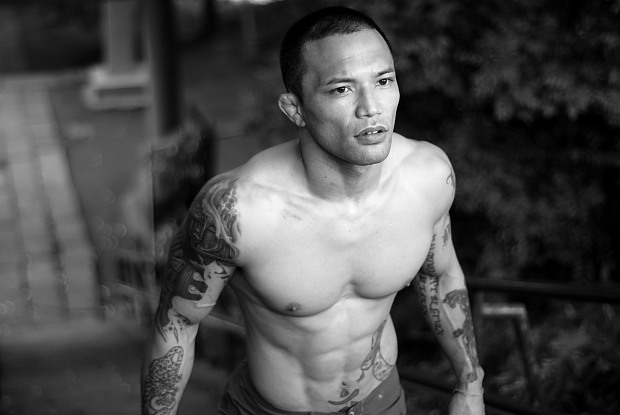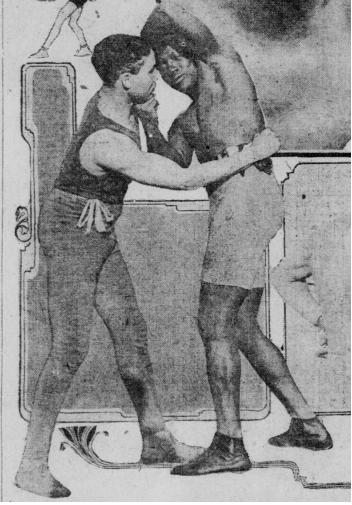
As a youngster growing up on a healthy diet of Bruce Lee and MMA the PRIDE Fighting Championship, to me, was the greatest show on earth. To my mind the UFC, Strikeforce and DREAM have yet to produce anything close to the quality and spectacle of the best PRIDE shows. Wanderlei Silva's undefeated streak of half a decade, that Fedor guy's emergence from some backwater mining town in Russia to make Nogueira look like an amateur not once but three times, Chuck Liddell and Quinton Jackson's tear up for a chance at the Middleweight crown.
There were so many wonderful moments in PRIDE and the Japanese culture and love of spectacle simply made the show even more beautiful. These weren't "gladiators" going in there to "war" or "bang", these were superstars on the biggest MMA stage in the world. When Cro Cop wept after finally winning a belt in the 2006 Open Weight Grand Prix you'll be hard pressed to find a PRIDE fan who didn't choke up too, and when Hidehiko Yoshida, an ageing Judoka with little striking experience, stood in front of Wanderlei Silva for two matches and made the champion respect his punch not as a technical striker but as a man, we all understood the meaning of "Bushido" - the warrior way. But two men exemplified the ideal of bushido and the golden age of Japanese MMA for me, and both fought at UFC 144 looking like shadows of their former selves. Kid Yamamoto and Takanori Gomi.
Kid Yamamoto: The Meaning of Pound for Pound
Kid Yamamoto spent his entire career up to 2007 fighting at lightweight despite being able to limbo under the 135lbs bar with ease. He fought at 155lbs because he wanted a belt and respect, and he damn sure got it. Despite giving up 10 - 20lbs to his opponents who cut weight to make 155, Yamamoto stopped Royler Gracie and Caol Uno in one night, then went on to be the first and only MMA fighter to stop Japanese MMA legend, Genki Sudo - whose list of submissions includes Mike Thomas Brown and Nate Marquadt. Kid was my idol, and when I finally got out of school I went to Japan with high hopes of meeting him. Being at his gym through his first legitimate MMA loss and and watching the man the Japanese called 'Son of God' clearly return to action without the abilites that he had carried through 18 MMA fights up to that point was heart-breaking.

I was only in my late teens at the time and I truly believed that Kid could return from repeated torn ACLs and two years out of action to beat any man DREAM placed him against. When he drew a match with Joe Warren I remember thinking that Warren would be stretchered out of the arena, but he took Kid down like no-one had in Kid's prime. Kid Yamamoto had stuffed Josh Thompson and out grappled Caol Uno and Jeff Curran but he was being laid on by Joe Warren. I wrote the loss off, like many other fans did, as ring rust. Kid immediately took a K-1 match against a relative nobody, Jae Hee Cheon.

The night before the fight Kid, his pad holder "Mr P" and myself were the only ones left in the gym and I hopped up on the ring apron to ask my idol in mangled Japanese "Which hand will you knock him out with?". He said "maybe this one" and raised his right fist. That right hook which had stopped so many men - in my heart I knew Kid would destroy this unknown Korean and get back on track. When Kid was knocked out while repeatedly swinging that right hook, I felt disappointment and confusion, but at eighteen years old I had been blinded from the obvious facts of a two year layoff and repeated knee injuries by my idolization of Yamamoto.
Misconceptions
Three years on, I can objectively look at Kid's fights and I never expect him to win anymore, his chin is shot, his right hook is still volatile but his stand up isn't as rounded as in his prime, and his knee injuries have taken their toll on his formerly world class wrestling. The one thing that I cannot tolerate though is people not giving him the place in MMA history that he has earned. I occasionally hear "yeah... then he came to the UFC and started losing" as if it were a step up in competition that began his downfall, but this is just flat out stupidity. Kid was 1-2 in his MMA career since his return before the UFC signed him and the win came over an irrelevant fighter brought in to get knocked out. To deny Yamamoto his place in MMA history as arguably the best featherweight who ever lived - having fought as one at lightweight and beating the best - is just ridiculous.
While I will always remain a fan and enjoy watching his old fights often, I think it is time for people to seperate the pre-2007 Yamamoto and today's Yamamoto. To pretend that they are the same is to discredit the brilliance of Yamamoto's 18 MMA matches and 3 K-1 performances before his injuries forced a hiatus the length of which few fighters have come back from. Objectively the Kid Yamamoto of 2006 could have beaten many of the top 10 fighters from bantamweight to lightweight in the world today and at least given the toughest challenge to the ones who could beat him.
Takanori Gomi: The Most Accomplished Lightweight in MMA History
Kid was a great fighter and I dreamed of having the strength which he carried in his prime, but the man I sought to emulate when I sparred was not Yamamoto, but Takanori Gomi. The Fireball Kid burst on to the main stage when Pride founded their Bushido event for lighter weight classes, going undefeated in his first ten fights with the biggest promotion in the world. Gomi had begun in Shooto as a one-dimensional ground and pounder. After destroying Japanese legend Rumina Sato he hit a brick wall when he suffered his first two career defeats against Joachim Hansen and BJ Penn. Despite Gomi's one dimensional nature at this stage, both matches were competitive and he even swept Penn from his back three times in the course of their fight - no small feet.

Gomi's real renaissance came after Penn exposed his inaccurate stand up. While Gomi remained pretty much a ground and pounder through his first three fights under the PRIDE banner, his stand up was improving all the time. When he was matched against lightweight striking expert and the only man to beat Penn at lightweight, Jens Pulver, he took him on in a pure striking match and won.
A right handed southpaw who could switch stances with ease Gomi threw every punch in the book. Long, smashing jabs hurt Pulver from a distance and twice Gomi threw a doubled up left hook, first to the body then immediately to the head of the wincing Pulver. Gomi's footwork, power and combinations looked incredible as he moved around Pulver with ease and landed the bigger, cleaner shots before putting Pulver away with a three punch combination.
From here on in Gomi had confidence in his stand up and began demolishing every man in the division with it. Despite BJ Penn's brilliance he never had the string of victories at lightweight that Gomi achieved during this time. Gomi almost entirely cleared out the lightweight division's top ten from 2004 - 2006, a feat which no-one in any division has replicated.
Misconceptions
The most common misconception about Gomi is the same as Yamamoto - that a step up in competition saw him begin his decline. This is clearly untrue - coming in fat and unprepared for Nick Diaz, Gomi lost to the Stockton native then went on a 4 - 3 slide against average competition BEFORE coming to the UFC. Just as was the case with Yamamoto - the UFC picked him up not for his accomplishments, but simply to stop a Japanese promotion such as Dream from using him to sell tickets, which is why Gomi and Kid are now on huge contracts but relegated to the undercard.
The second misconception about Gomi is that his power somehow "compensated" for a lack of skills in other areas. This is a myth which has been helped along by Joe Rogan basically saying it in the heat of the moment at UFC 144. Rogan did an excellent job that night, even giving props to Fedor which is a ballsy thing to do, but he was flat out wrong about Gomi.

Takanori Gomi was recognized for 2 years as having the finest boxing in MMA for a reason - take a look at any of his PRIDE striking performances, he pressures opponents, works the body and utilizes straights even more than the looping bombs that have come to be seen as his style. A look at his fight at UFC 144 will show you how far he has fallen and why. While Gomi always fought out of a crouch, he was one of the most mobile fighters at lightweight - cutting off the ring expertly - but now stands with his weight so far over his front foot that he cannot move freely. By leaning over his front foot his reach is also reduced.

Against Griffin and Ishida this style worked because Gomi needed to be quick to sprawl and their striking is inadequate, but against Forian, Nate Diaz and even Guida, his inability to move and having his face well forward of his waist cost Gomi big. What's more - though Gomi threw looping punches in his prime, they were never the laughably wide haymakers of today. He was a clinical boxer who threw power punches into holes. Gomi has become a parody of himself, accentuating the qualities that the fans used to characterize him, rather than the ones that cause his amazing success.
Both Gomi and Yamamoto seem destined to live out their days as also rans in the UFC, but the feats they achieved in their prime should not be overlooked. If we can recognize the rapid improvement of Mark Hunt and the decline of BJ Penn, lets not pretend that Yamamoto and Gomi are the same men they were when they set the world ablaze 6 years ago.
From:
http://www.headkicklegend.com/2012/2/27/2827605/misconceptions-about-yamamoto-gomi















